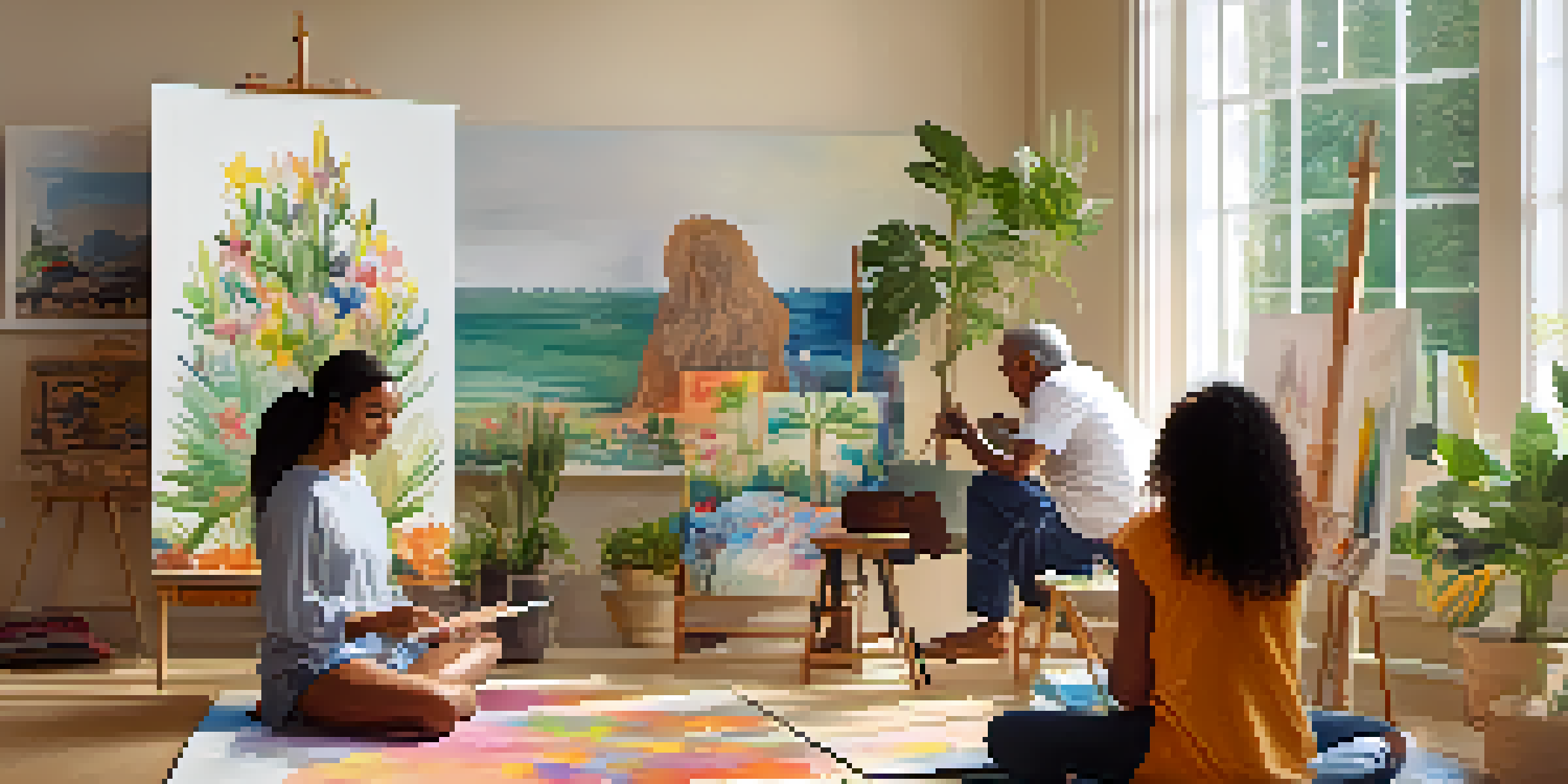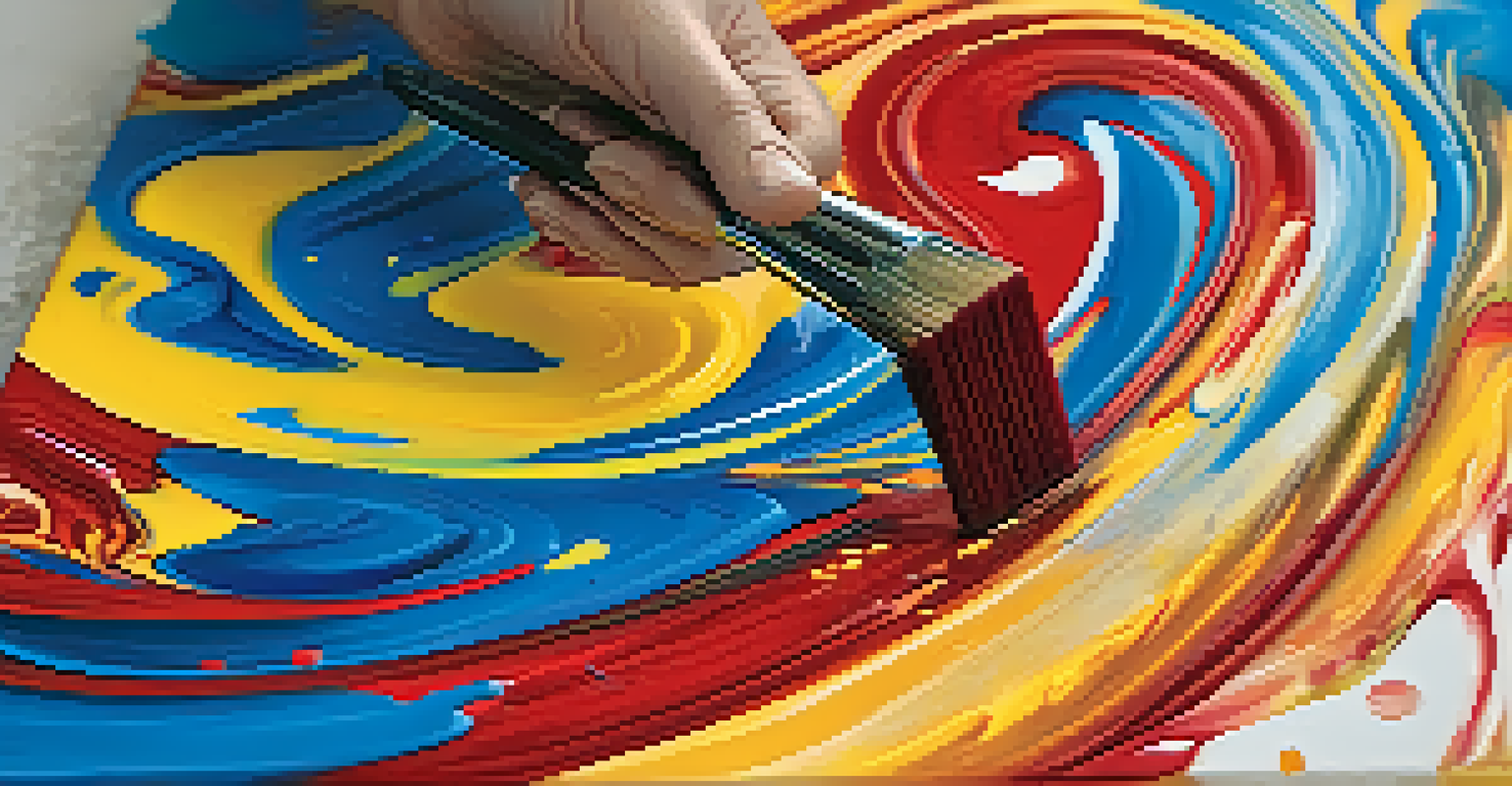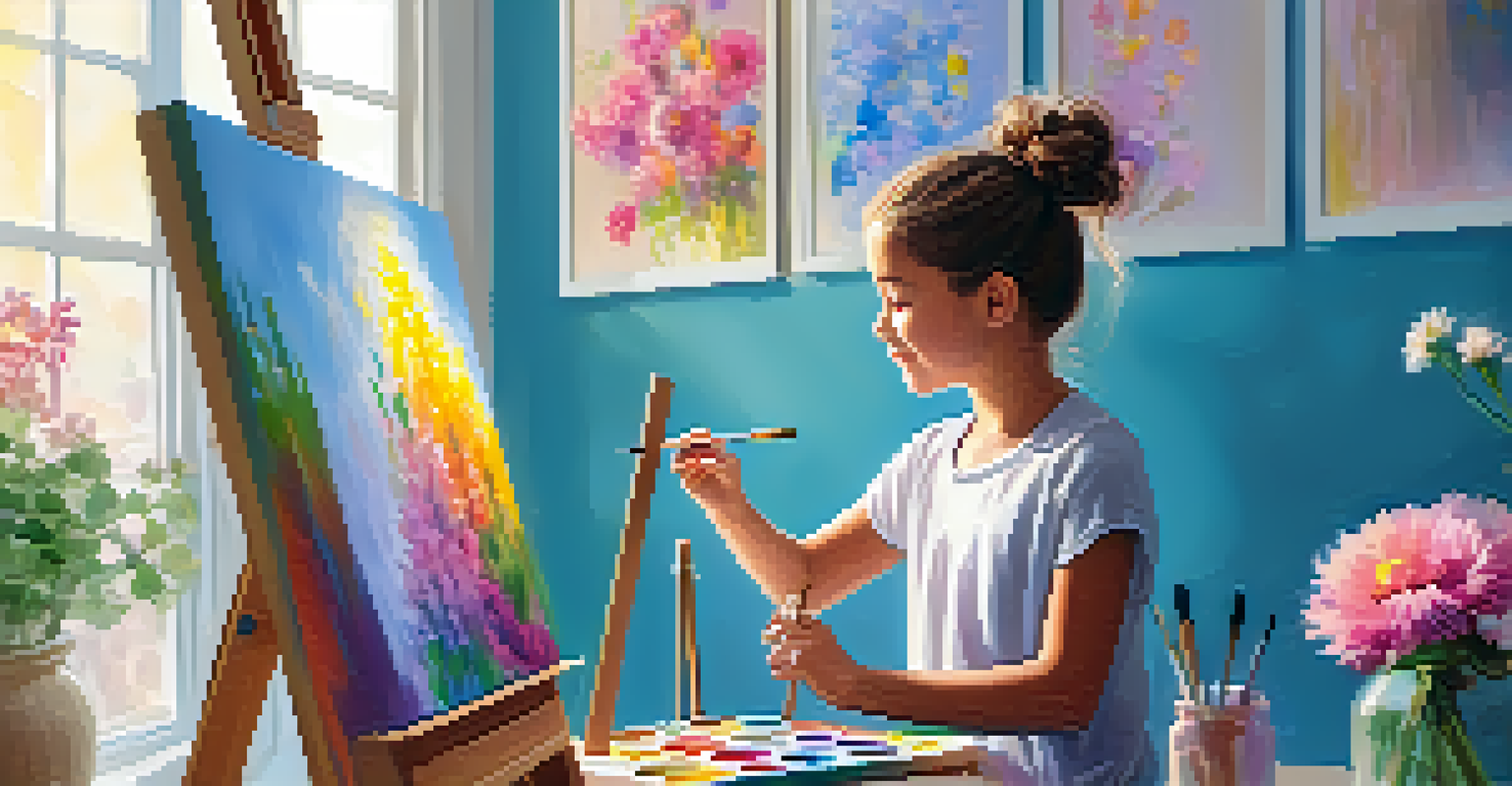Art Therapy: Healing Through Painting and Memory Recall

Understanding Art Therapy and Its Benefits
Art therapy is a form of psychotherapy that encourages individuals to express themselves creatively. By using art as a medium, it allows people to explore their emotions and thoughts in a non-verbal way. This can be particularly beneficial for those who struggle to articulate their feelings.
Art is not what you see, but what you make others see.
The benefits of art therapy extend beyond just self-expression. Research shows that engaging in creative activities can reduce anxiety, improve mood, and even enhance cognitive functions. It acts as a therapeutic outlet that fosters healing and personal growth.
Moreover, art therapy can be a powerful tool for memory recall. By engaging in creative processes, individuals can tap into memories and emotions that may have been buried or forgotten, leading to deeper self-understanding and healing.
The Role of Painting in Art Therapy
Painting is one of the most common forms of expression in art therapy. It allows individuals to create visuals that represent their thoughts and feelings, often leading to profound insights. The act of putting brush to canvas can be a liberating experience.

Through painting, participants can explore various themes, such as trauma, joy, or loss. The colors and forms chosen often reflect their inner emotional state, serving as a mirror to their psyche. This visual representation can facilitate conversations about their experiences and emotions.
Art Therapy Enhances Self-Expression
Art therapy provides a creative outlet for individuals to express emotions that are difficult to articulate verbally.
Additionally, painting can be a meditative process. It allows individuals to focus their minds and immerse themselves in the creative moment, helping to alleviate stress and promote relaxation.
Memory Recall: A Pathway to Healing
Memory recall plays a crucial role in art therapy, as it helps individuals access and process emotional experiences. When clients engage in creative activities, they often tap into memories that are linked to their feelings, which can be both enlightening and therapeutic.
Every artist was first an amateur.
By revisiting these memories through art, individuals can confront unresolved issues and work through their pain. This process can lead to significant breakthroughs, allowing them to gain a sense of closure and healing.
For many, this journey of recalling memories through art can be transformative. It not only aids in healing but also fosters a greater understanding of oneself and one's life story.
How Art Therapy Enhances Emotional Expression
Art therapy provides a safe space for emotional expression, especially for those who may find it challenging to communicate verbally. The creative process can give individuals a voice, allowing them to express emotions that might otherwise remain unspoken.
This form of therapy can be particularly beneficial for children or individuals with trauma, where traditional talk therapy may not be effective. Art serves as a bridge, connecting emotions with visual representation, which can be easier to navigate.
Painting Aids Memory Recall
Through painting, individuals can access and process emotional memories, facilitating healing and personal insight.
Moreover, the act of creating can empower individuals, giving them a sense of control over their emotions and experiences. This empowerment can be a critical step in the healing journey.
The Therapeutic Environment of Art Therapy Sessions
Art therapy sessions typically take place in a supportive and nurturing environment. This setting is designed to make participants feel safe and comfortable, allowing them to explore their creativity without judgment.
The presence of a trained art therapist further enhances this environment. They guide participants through the process, providing insights and support while respecting each individual's unique journey.
The combination of a safe space and professional guidance fosters a conducive atmosphere for healing. Participants can engage deeply with their emotions and memories, ultimately leading to personal growth.
Case Studies: Success Stories in Art Therapy
There are numerous success stories that highlight the effectiveness of art therapy. For instance, individuals recovering from trauma have used painting to express their pain and confusion, leading to significant emotional breakthroughs.
In one case, a young woman who struggled with anxiety found solace in creating abstract art. Through her paintings, she was able to express feelings she couldn't articulate, which helped her gain control over her anxiety.
Supportive Environment is Key
The nurturing setting of art therapy sessions, guided by trained professionals, fosters a safe space for emotional exploration.
These stories illustrate the transformative power of art therapy, showcasing how painting and memory recall can lead to healing and personal insight.
Getting Started with Art Therapy
If you're interested in exploring art therapy, the first step is to find a qualified art therapist. Look for professionals who are trained in both art therapy techniques and psychological support, ensuring a comprehensive approach to your healing.
Many therapists offer introductory sessions where you can discuss your goals and what you hope to achieve through art. This initial conversation is crucial for establishing a foundation for your therapeutic journey.

Remember, art therapy is for everyone, regardless of artistic skill or experience. The focus is on the process of creation and self-exploration, not on the final product.